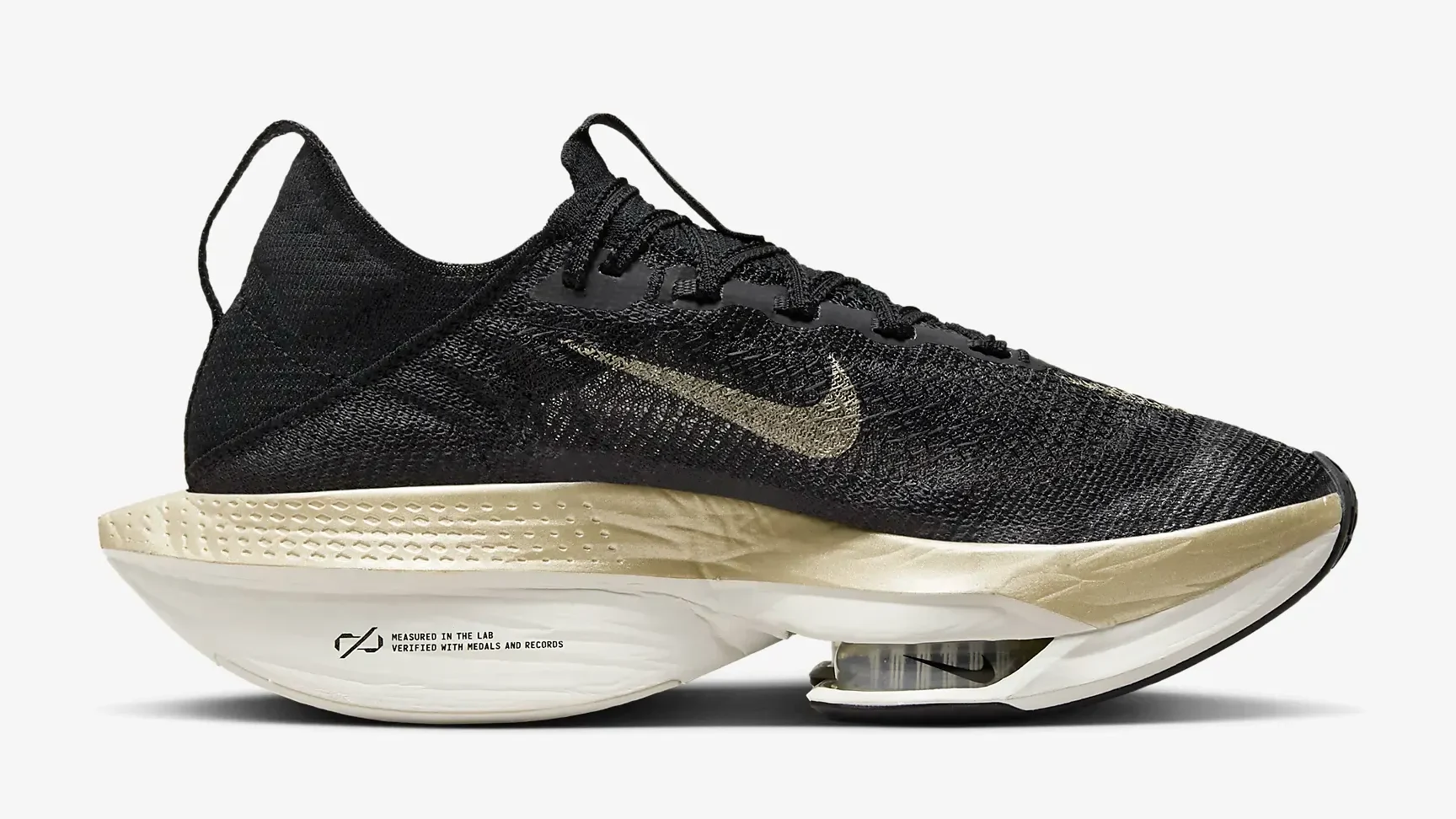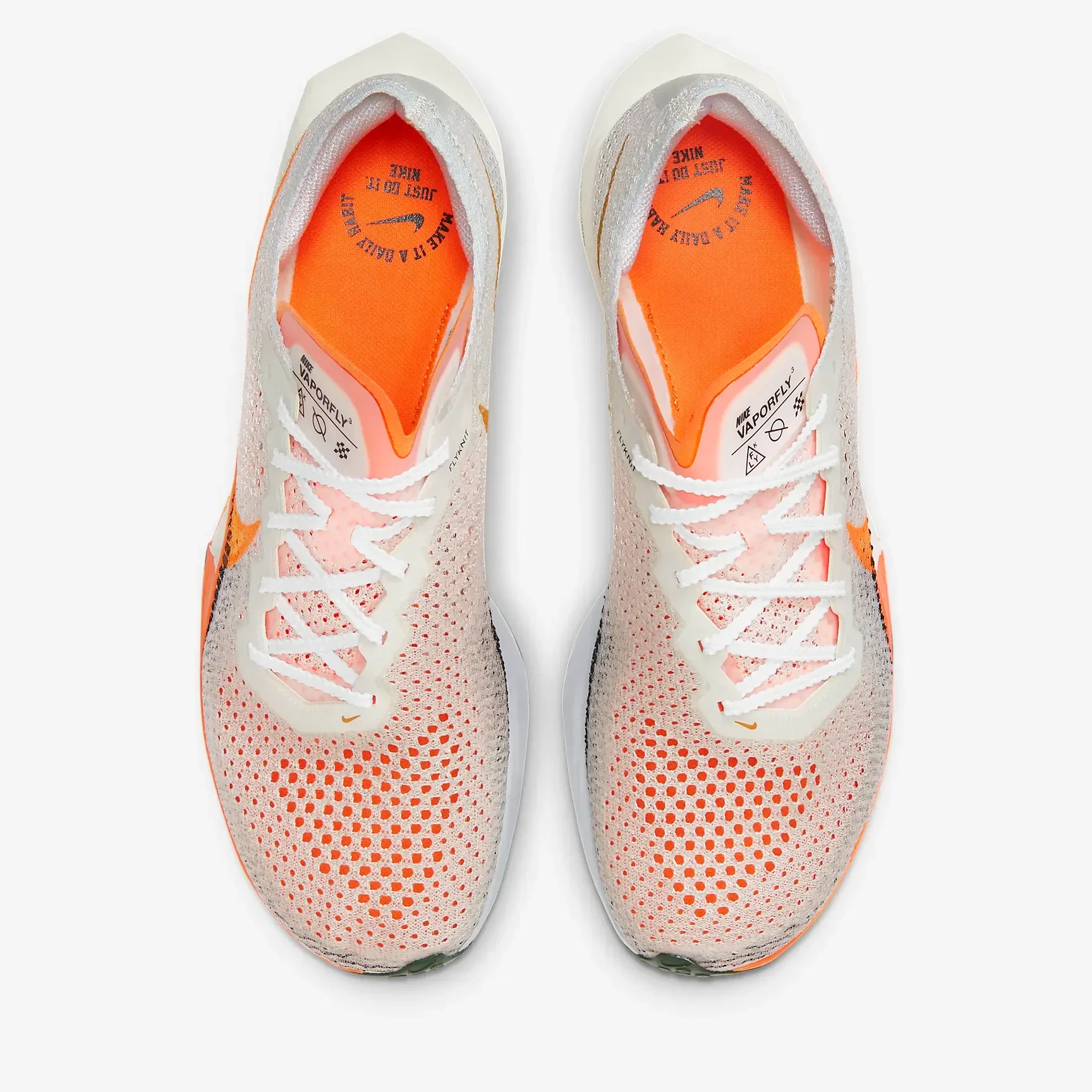The Nike AlphaFly 2 and Vaporfly 3 represent two of Nike’s top racing shoes featuring the latest marathon technologies. Both incorporate a stiff carbon fiber plate to propel runners forward using record-breaking ZoomX foam. As updates to prior versions, they aim to provide an even lighter, bouncier and stable platform for race day and marathon training.
But how do these two shoes truly stack up across metrics like cushioning, durability, and value? Read on below for a detailed feature-by-feature breakdown to see which model crosses the finish line first for your racing needs.
Comparison Table between AlphaFly 2 and Vaporfly 3:
| Feature | AlphaFly 2 | Vaporfly 3 |
|---|---|---|
| Launch Date | 2022 | 2024 |
| Stability | More stable than v1 but still not for sharp turns | Some stability |
| Flexibility | Very stiff | Rigid |
| Weight | Men’s: 8.47oz <br> Women’s: Not listed | 6.5oz |
| Cushion | Plush ZoomX with carbon plate | Highly-cushioned ZoomX with carbon plate |
| Outsole | Rubber | Rubber with weight-saving holes |
| Midsole | Full-length ZoomX foam | Full-length ZoomX foam & carbon fiber plate |
| Upper | Breathable Flyknit | Breathable, comfortable Flyknit |
| Price | $285 | $260 |
Features Comparison:
Materials:
The AlphaFly 2 stacks ZoomX foam from heel to toe along with a curved carbon fiber plate for a propulsive yet plush feel. Its knit Flyknit upper stretches to accommodate different foot shapes. The AlphaFly 2 uses solid rubber along the entire outsole for traction and durability.


The Vaporfly 3 also incorporates full-length ZoomX foam paired with a carbon plate for energy return. However, its outsole features strategic rubber placement with exposed holes to shave weight. The Flyknit upper focuses on breathability with support only where needed.
Durability:
Testers found the AlphaFly 2 more durable than prior versions, likely thanks to its full coverage outsole rubber which protects the foams. Most shoes lasted around 200 miles before signs of wear. However, the brittle carbon plate can snap over time.
Though improved, the Vaporfly 3’s exposed foam midsole continues to sacrifice some durability by allowing direct wear and tear. Testers saw pronounced creasing and wear around the 150 mile mark, especially for larger runners. The thin upper is also prone to holes and tears.
Fit:
The AlphaFly 2 fits true-to-size in a wider profile preferred by many forefoot strikers. The stretchy Flyknit upper moves with feet and the padded heel collar prevents uncomfortable rubbing for most wearers.


Testers found the Vaporfly 3 fits snugger in a sleeker silhouette than its maximal cushioned design suggests. The Flyknit upper molds comfortably around different foot shapes while a new padded ankle opening prevents irritation.
Cushioning:
With its curved carbon plate rolling over plush ZoomX foam, the AlphaFly 2 delivers a soft bouncy ride described by testers as “trampoline-like.” The responsive foam compresses without feeling unstable or bottoming out.
Also utilizing Nike’s lightweight ZoomX, the Vaporfly’s carbon plate delivers a notably smooth transition without the mushy feeling underfoot. Testers felt they rebounded effortlessly in a “catapult effect” during races.
Stability:
The AlphaFly 2 wisely broadened its platform for better stability underfoot than the tippy version 1, though the rigid design still feels best at faster paces moving forward. The upper locks down for support during marathon distances.
With strategically placed support and structure, the Vaporfly 3 controls overpronation and medial roll better than prior versions while retaining torsional rigidity. So while not ideal for sprints requiring quick turns, the platform remains stable for forward propulsion during heeled landings.
Value:
With a staggering price tag of $285, the AlphaFly 2 prompts sticker shock – albeit with potential race day performance benefits. Nike looks to justify costs by incorporating three advanced technologies – ZoomX foam, carbon plating, and Flyknit upper. Still, the high price narrows its market largely to die-hard competitors.
The Vaporfly retails for $260, presenting a (small) value advantage over the AlphaFly 2. Testers felt the comfort, improved stability, energetic snapping sensation, and reduced weight make this model a worthwhile racing investment for marathoners focused on new PRs versus purely value.
Performance comparison:
Walking:
The rigid AlphaFly 2 feels clunky for casual walking given its inflexible sole and notably high heel height. Cushioning provides underfoot relief but feels wasted at slower walking paces.
Similarly designed for speed, testers found the Vaporfly 3 awkward for leisurely walking. Without forward momentum bending the plate, ZoomX feels almost too soft. The snug Flyknit upper also constricts wider feet during swelling.
Running:
Optimized for race days, the AlphaFly 2 delivers on providing a fast, propulsive and plush ride once up to speed. Testers felt they floated comfortably hitting PRs at half to full marathon distances.
Created with marathon racing in mind, the lightweight Vaporfly 3 gives runners a smooth, flexible toe-off amplified by the reactive foam and carbon fiber plate translating to energy savings at goal race paces and distances.
Standing All Day:
The unstable curved shape and stiff build of the AlphaFly 2 does not lend itself well to all-day wear. Testers note discomfort around the ankles and Achilles plus pressure under the forefoot while standing statically for long periods.
Similarly, testers standing for extended periods in the Vaporfly 3 report soreness and fatigue setting in around the heel and forefoot given the rigid platform built strictly for fast running, not stationary wear. Areas prone to swelling felt restricted.
Plantar Fasciitis:
The rigid plating and stretched out ZoomX foam provides insufficient arch support, pressure relief or stability for managing intense plantar fasciitis discomfort. The curved shape also excessively strains the Achilles and ankles.
While cushy, the soft uncompressed ZoomX midsole fails to deliver much-needed structure for preventing overpronation and arch collapse associated with inflammation and heel pain tied to severe plantar fasciitis.
Conclusion:
Both marathon racing models, the Nike AlphaFly 2 and Vaporfly 3 offer uniquely designed responsive cushions systems to help competitive runners chase new PRs.
The AlphaFly 2 takes a slight lead for max cushioning comfort over ultra distances whereas the Vaporfly better stabilizes medium to fast marathon paces at a lower cost. However, neither provides enough flexibility or arch support for casual running. Save them for race day glory over jaw-dropping finish lines when every second counts. For training, seek out shoes offering more versatility across speeds and distances.

